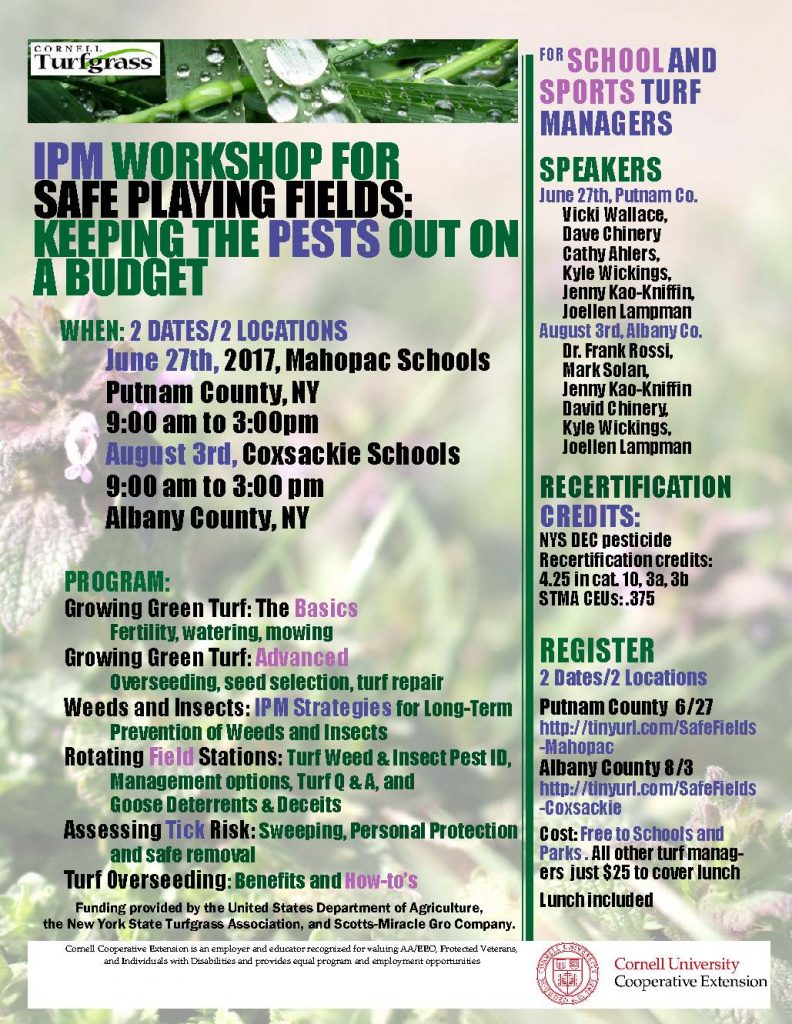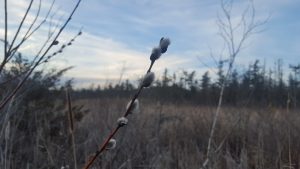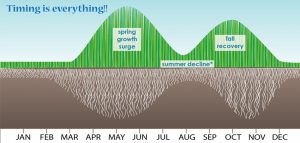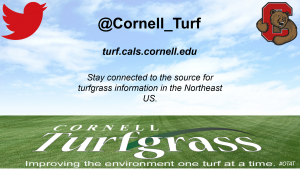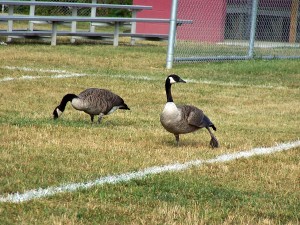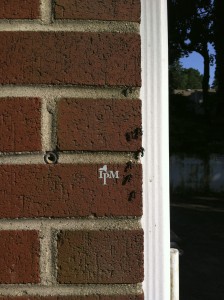northeastipm.org/schools//
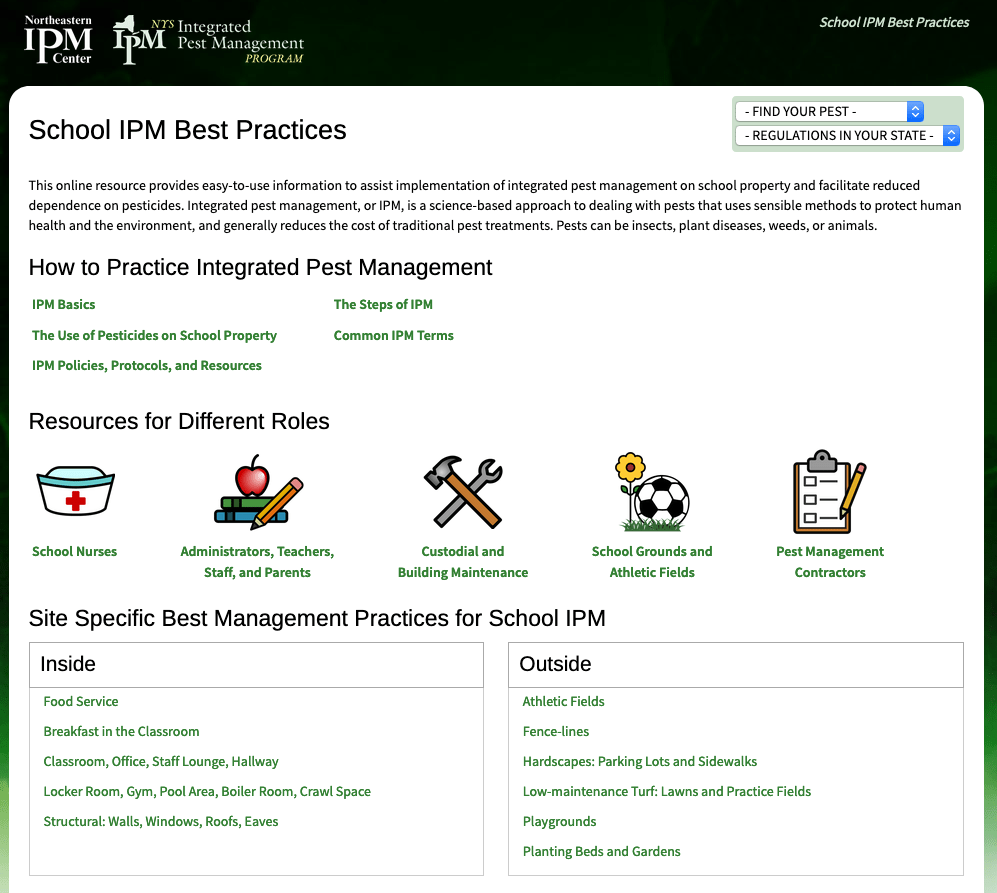
Our New Look!
Back in 2013, the Northeast School IPM Working Group (NESIWG) received a Partnership Grant from the Northeastern IPM Center to develop a Best Management Practices (BMP) website.
northeastipm.org/schools//

Reducing pest and pesticide exposure is important for children, just as it is for district staff and visitors. But schools are especially challenging to manage because they include such varied and heavily used settings such as classrooms, cafeterias, laboratories, auditoriums, theaters, playing fields, playgrounds and gardens.
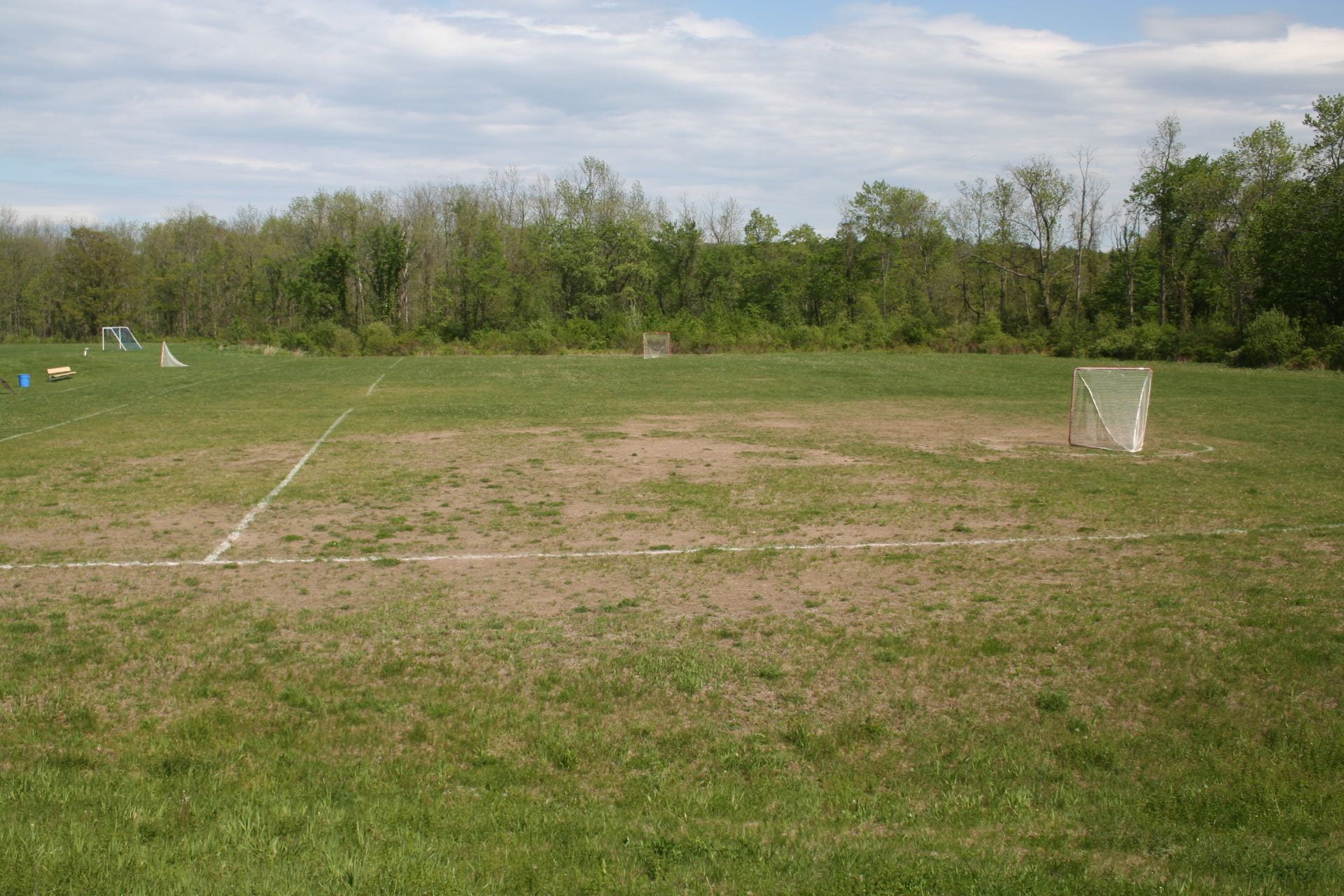
The burden of use on an athletic field. (NYSIPM photo)
With the help of many contributors, the NESIWG both created and collected resources for school IPM. We wanted to help administrators, school boards, parents, teaching and support staff, athletic directors, groundskeepers, kitchen staff and custodians how a designated pest management plan can reduce both pests and the need for pesticides. The website was a success.
By 2018, NESIWG members saw the need to update old links and fill out gaps in the content. Eager to keep the website a useful and comprehensive resource, the working group applied for and received a NEIPM Communications grant. Again using focus groups, the following changes were made:
- a reorganization of the pest species list,
- additional information on relevant pesticide use regulations in all Northeastern states,
- grouping resources by stakeholder roles,
- the addition of two new pages: Breakfast in the Classroom and Playgrounds
Additionally, the recent grant included an update of the working group’s homepage, a new ranking of regional school IPM priorities, a current membership list and an index of school IPM contacts in the Northeast.
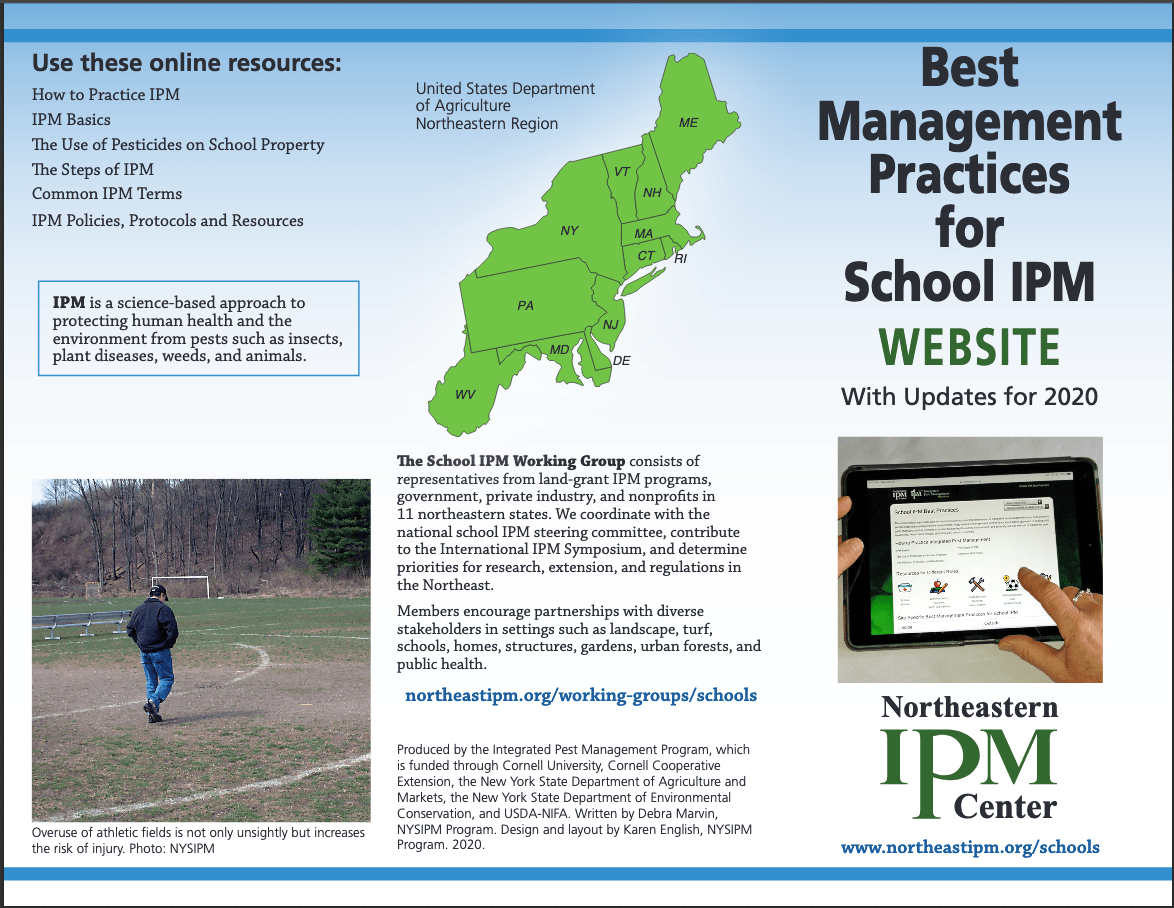
Front (Outside) of Brochure
Now, with changes soon to be complete, the NESIWG welcomes your visits and assistance in sharing this helpful site. After all, finding and using the website is key!
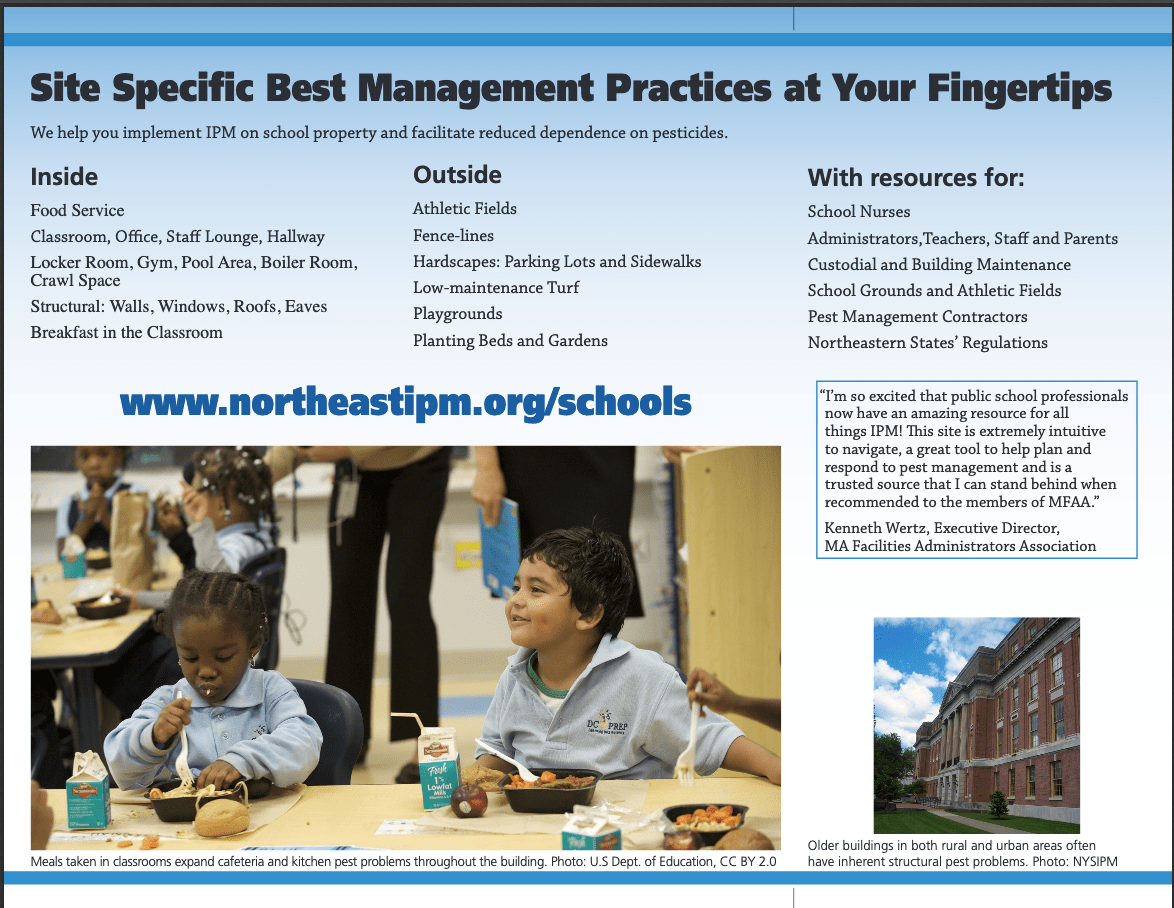
Back (Inside) of Brochure

